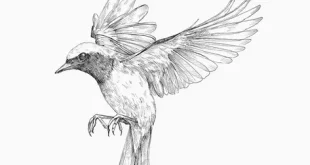Common Tern Bird Role Do Play in usa Coastal Ecosystems
Habitat and Nesting Areas of the Common Tern

The Common Tern Bird thrives along America’s coastal regions, freshwater lakes, and large river systems, where food is abundant. Their preferred nesting grounds are sandy beaches, rocky islands, and grassy shorelines safe from frequent flooding. Colonies usually form in groups, with each bird protecting its territory while still nesting near others closely. These areas are selected due to easy access to fish, ensuring both adults and chicks remain well-fed. In the USA, conservation programs work to protect these crucial habitats from disturbances caused by human activity. Nesting sites often face threats from predators, climate change, and increasing recreational use of beaches by visitors. Despite challenges, their adaptability allows them to return yearly to familiar nesting territories. The Common Tern demonstrates remarkable site fidelity, often nesting in the same locations across multiple breeding seasons consistently.
Physical Appearance and Recognizable Features of the Common Tern

The Common Tern Bird is recognized by its sleek body, grayish-white plumage, and sharply pointed red-orange bill. Their wings are long and narrow, enabling strong, agile flight across coastal waters while searching for prey actively. A black cap covers the head during breeding season, giving them a distinctive, sharp appearance easily recognized. These seabirds are also known for their forked tails, often leading to confusion with swallows at distance. Their calls are loud and harsh, particularly during nesting, serving as alerts against predators and intruders nearby. Males perform aerial displays, offering fish to females as part of an elaborate courtship ritual during breeding. Despite their small size, they travel long distances and show impressive endurance across various migration journeys. The Common Tern stands out as one of the most graceful and recognizable seabirds in American habitats.
Feeding Patterns and Hunting Behavior of the Common Tern

The diet of the Common Tern Bird mainly consists of small fish such as herring, minnows, anchovies, and silversides. These birds hunt skillfully, hovering above water before plunging headfirst with precision into shallow coastal waters. Their sharp eyesight allows detection of fish below the surface, even in bright sunlight or reflective water conditions. Hunting often occurs in groups, with multiple terns feeding simultaneously around schools of fish swimming near shorelines. Occasionally, they consume crustaceans or insects, depending on availability, especially when fish populations are temporarily scarce locally. During breeding season, males provide fish to females and chicks, ensuring sufficient nutrition for developing young fledglings. This cooperative feeding highlights their strong parental instincts, which play an important role in colony survival and growth. The Common Tern’s hunting strategy combines elegance and efficiency, reflecting adaptation to diverse aquatic environments across the United States successfully.
Migration and Seasonal Movements of the Common Tern
The Common Tern Bird is a long-distance migrant, traveling thousands of miles annually between breeding and wintering grounds successfully. In the USA, breeding primarily occurs during summer months, with colonies forming along coastal and inland freshwater sites. By late summer, flocks begin their migration southward, heading toward Central and South America’s warmer coastal habitats. This incredible journey demonstrates endurance and remarkable navigation abilities, often passing across open oceans for extended travel routes. Banding studies and satellite tracking provide scientists with insights into survival rates, stopover sites, and migratory behaviors. Seasonal migrations depend heavily on climate conditions, food availability, and changing weather patterns across continental regions annually. The return of these seabirds each spring signals renewal, with colonies reclaiming familiar nesting grounds across American landscapes. The Common Tern’s migration highlights nature’s complexity, showing the resilience and adaptability required for long-distance journeys undertaken.
Conservation Challenges and Protection Efforts for the Common Tern

The population of the Common Tern in the USA faces threats from habitat destruction, predators, and human disturbances annually. Rising sea levels and erosion reduce safe nesting areas, leaving colonies vulnerable to flooding during breeding season. Recreational beach activities, development, and pollution further complicate survival, disturbing fragile ecosystems where these seabirds reside. Predators such as gulls, raccoons, and invasive species pose risks to eggs, chicks, and nesting adults nearby. Conservation initiatives include habitat restoration, predator control, and establishing protected areas, ensuring suitable conditions for breeding colonies. Federal agencies and conservation groups actively monitor populations, using banding and surveys to track survival and reproductive success. Community awareness programs encourage respectful human behavior near colonies, reducing unnecessary disturbances to fragile nesting environments. The Common Tern’s survival in America depends on continued conservation, emphasizing balance between human activity and natural ecosystems overall.
 Birds Drawing Birds Drawing
Birds Drawing Birds Drawing




